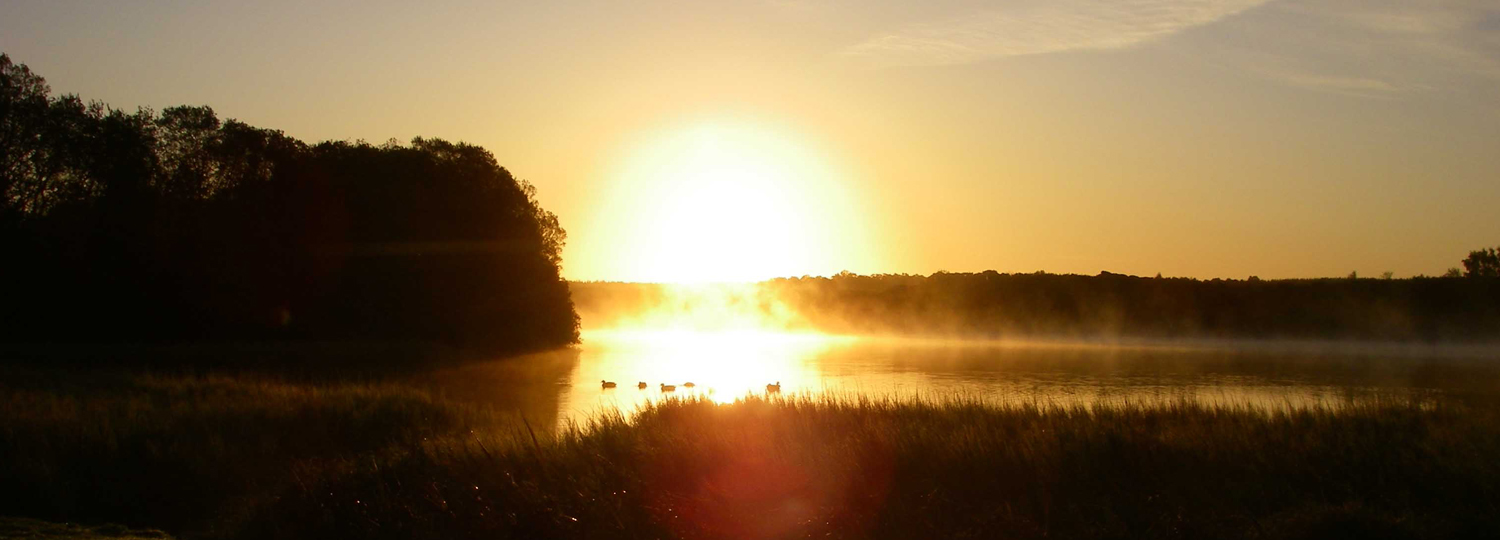Overview
Loch Flemington is a shallow (surface area 15ha, mean depth c. 0.75m, maximum depth 2.35m) nutrient-enriched lake in northern Scotland. Algal blooms at the site are common and fish deaths have been reported. This is now affecting the loch's conservation status (part of Kildrummie Kames SSSI), and it is currently classified as being in unfavourable condition in relation to all of its current conservation targets (ie, rare aquatic plants and a breeding population of the Slavonian Grebe (Podiceps auritus)).
Pressures
Phosphorus (P)-rich sewage effluent, animal waste and agricultural runoff entered the loch over many years. Persistent internal phosphorus loading from sediments was also identified as a problem. The lack of a natural surface water outflow at the loch reduced the likelihood of P relinquishment and encouraged the stockpiling of P in the loch sediments, exacerbating the water quality problems. The invasive aquatic macrophyte species Elodea canadensis (established population) and Crassula helmsii (early population encroachment) are also present. Fish surveys using gill nets indicated that the loch was inhabited by three-spined stickleback and that brown trout and other fish species had probably disappeared during fish kills reported in the mid-1990s.
Management responses
Initially, catchment management activities were undertaken to reduce external nutrient loading. Treated effluent from a nearby wastewater treatment works (WWTW) was re-directed from the Croy Burn to the river Nairn in 1989 and the WWTW was upgraded in 1993 because sporadic effluent spillages continued to enter the Croy Burn during periods of overload. A recent assessment of total P (TP) loads to Loch Flemington indicated that the dominant TP sources were now diffuse (mainly agricultural) sources, which represented ~80% of the external TP load, and septic tanks, which represented ~18% of the external TP load. To control internal P loading, and in an attempt to effect a switch from a phytoplankton to a macrophyte dominated lake, the bed sediments were treated with 25 tonnes of Phoslock® in March 2010. In addition, shading was trialled to control the spread of Crassula helmsii and clear cutting was trialled to control Elodea canadensis.
Monitoring the environment
CEH comprehensively monitored the physico-chemical (eg nutrients, metals and weather) and biological (eg aquatic plants, macroinvertebrates, zooplankton, phytoplankton and fish) indicators of water and sediment quality between 2009 and 2011. CEH continues to support a community-based water quality monitoring programme at the site led by Mr John Pottie. A range of other stakeholders (eg SEPA, RSPB and SNH) also monitor water quality and conservation indicators at the site.
Environmental responses
By 2010, little change had been observed in response to the reduction in external loading. This was due to persistent internal P loading that resulted in TP concentrations of up to 170µg l-1 in summer and mean annual TP concentrations of 60µg l-1 in 2009. Following the control of internal loading (March 2010), a ~60% reduction in the peak algal biomass and an associated improvement in water clarity were observed. When compared to WFD water quality targets (ie 32μg l-1 for a high alkalinity, very shallow lake), annual mean TP concentrations in 2009, 2010 and 2011 were found to be 60μg l-1, 31μg l-1 and 27μg l-1, respectively. Although internal loading was significantly reduced, laboratory trials suggested that further improvement could be achieved through a combination of catchment management and further internal load reduction. In 2009, cyanobacterial biovolume was consistently indicative of a moderate-high risk during July-September, although estimates of absolute biovolume were lower in all months in 2009, apart from September. A marked decrease in cyanobacterial biovolume was apparent in 2011 in comparison with 2009 and 2010, with values indicating that there was no risk of adverse human health effects throughout the year. No significant changes were observed in the fish or zooplankton community between 2009 and 2010, or 2011.
Clear cutting reduced the volume of the loch inhabited by Elodea canadensis, although this method is only a short-term solution and would need to be repeated continuously. Shading appeared to reduce Crassula helmsii biomass in the treated areas, but its spread was not halted.
Management priorities for the future include (1) further catchment management to control diffuse sources of nutrients, (2) investigate potential biomanipulation of the fish community to ease the grazing pressure on zooplankton, and (3) continue to eradicate Crassula helmsii using plastic sheeting.
